Abstract
Although the Internet has evolved over more than twenty years, resources useful to health information professionals have become available on the Internet only recently. A survey conducted by the Regional Medical Libraries of the National Network of Libraries of Medicine in the fall of 1993 indicates that libraries at academic institutions are much more likely to have access to the Internet (72%) than are libraries in hospital environments (24%). Health information professionals who take on the challenge and exploit the Internet's resources find rewards for themselves and their clients. The basic electronic mail capability of the Internet allows colleagues to collaborate, communicate, and participate in daily continuing education. Internet terminal and file-transfer capabilities provide improved access to traditional resources and first-time access to new electronic resources. Through the Internet, online catalogs are available worldwide, and document delivery is faster, cheaper, and more reliable than ever before. Institutions can make organizational, full-text, online, and publication information available through Internet tools such as direct file-transfer protocol (FTP), menu-based Gopher, and hypertext-based Mosaic. The National Library of Medicine (NLM) is among organizations finding new ways to provide service through the Internet. NLM now uses electronic mail to communicate with users, FTP service to distribute publications, and tools such as Gopher and Mosaic to distribute publications and graphics and connect users to online services. The Internet allows service providers and health sciences information professionals to work in a rich, new medium whose potential is just beginning to be explored. At the same time, its characteristics--including lack of formal organization, standards, quality control, and permanence--pose a challenge.
Full text
PDF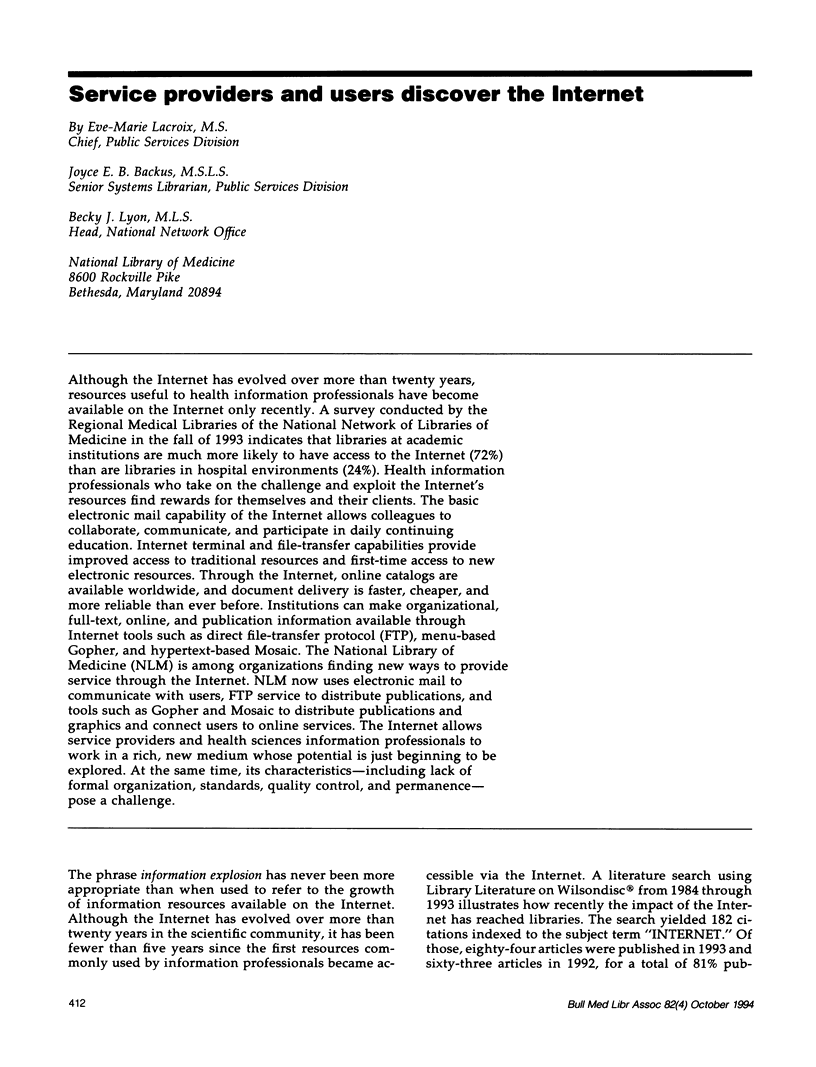
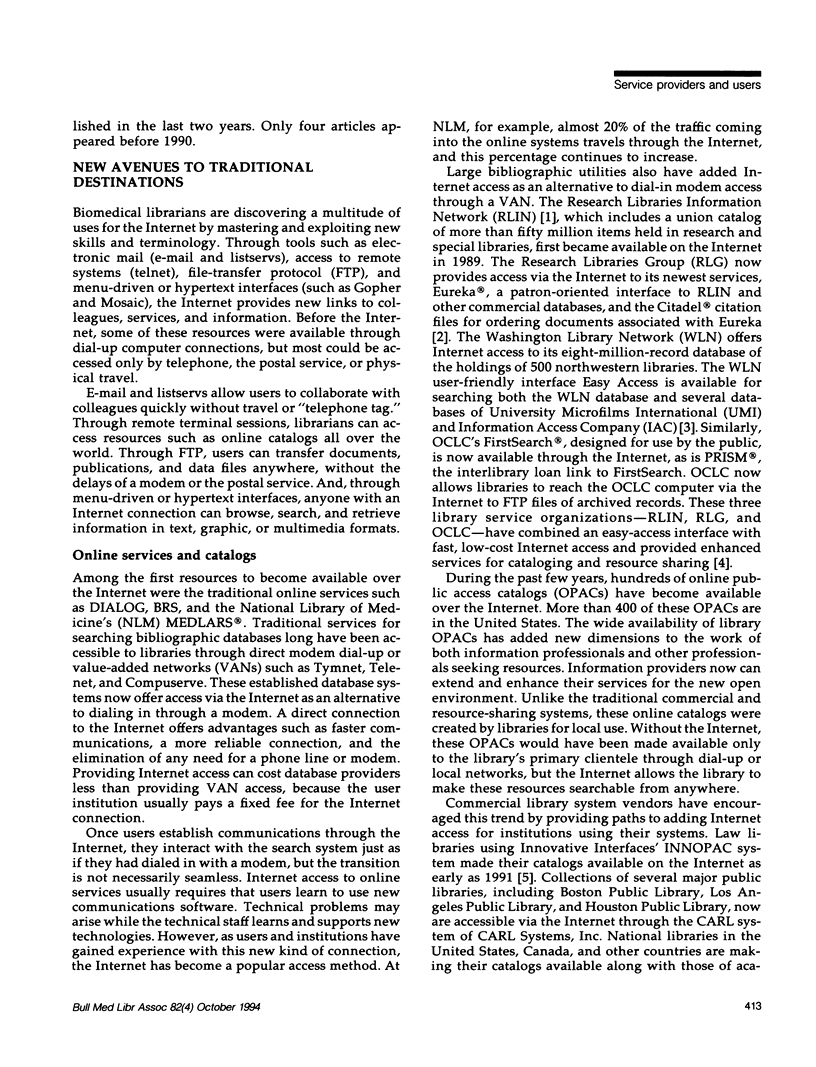
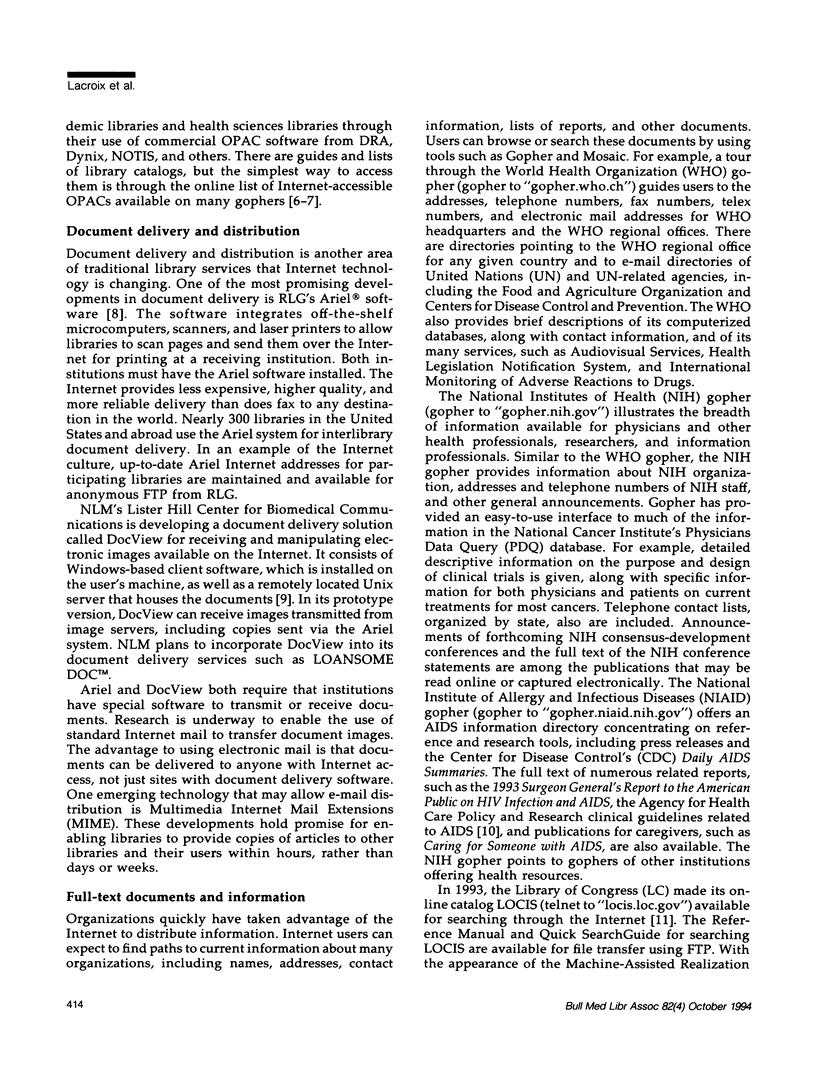

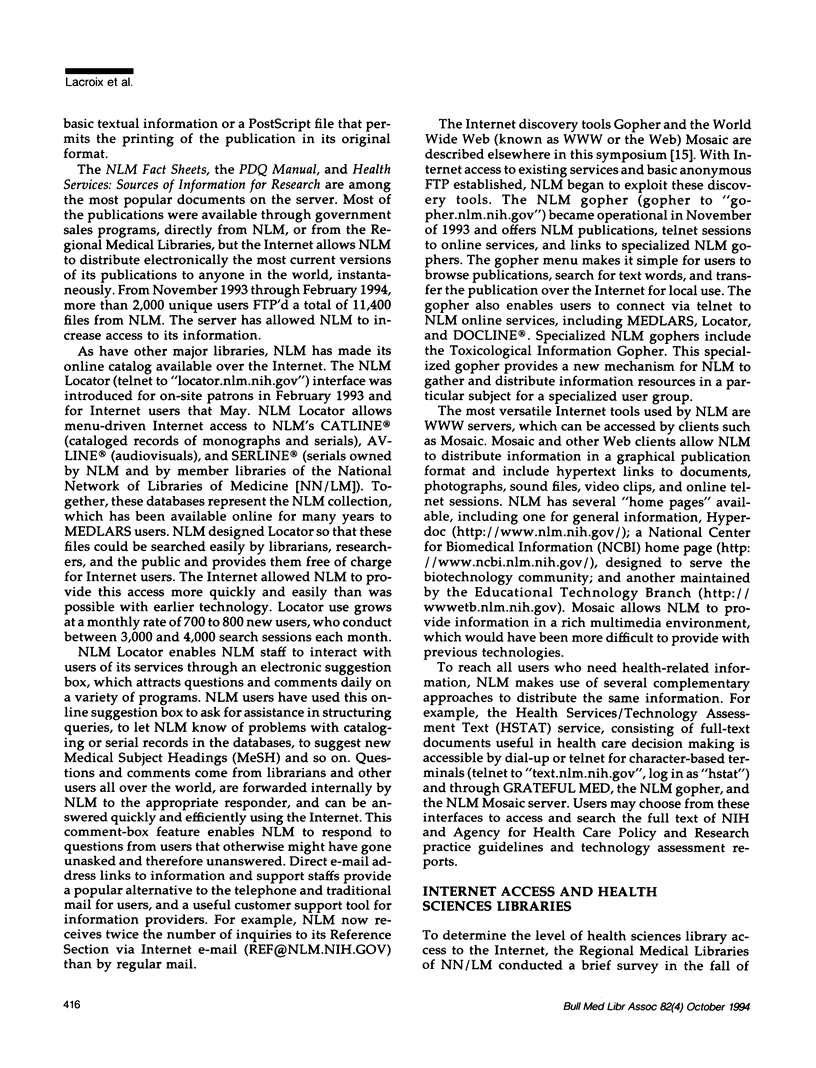
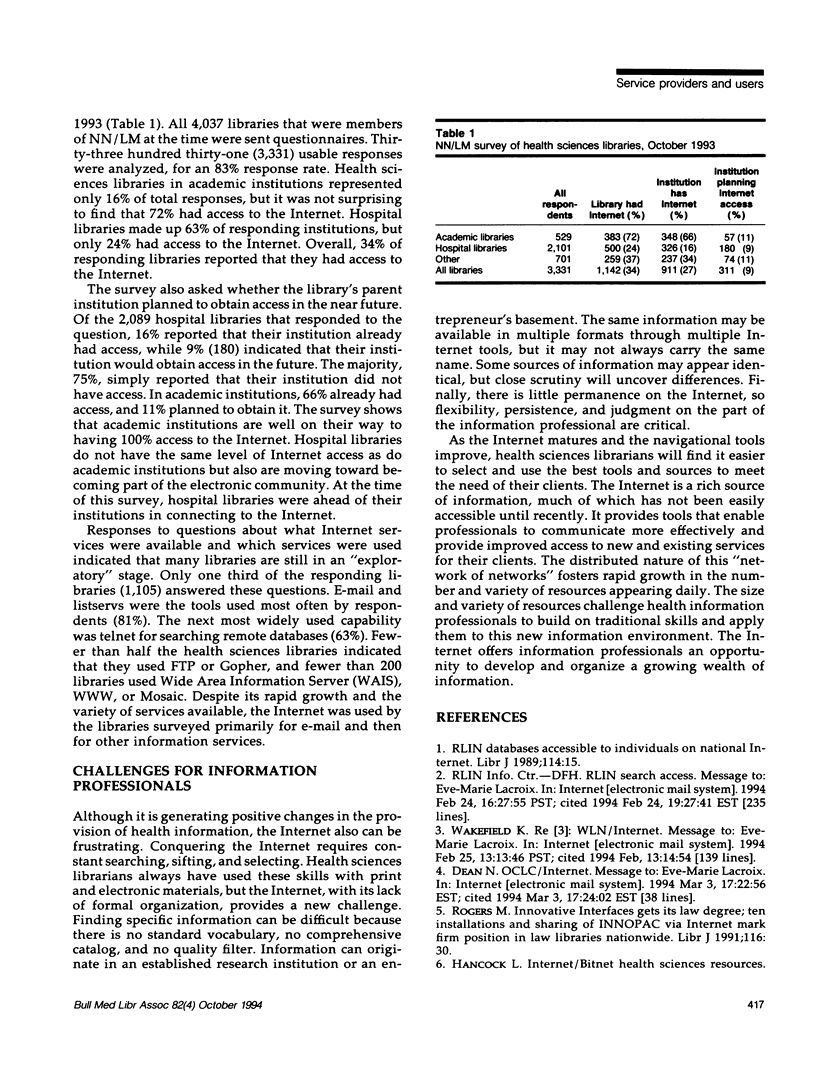
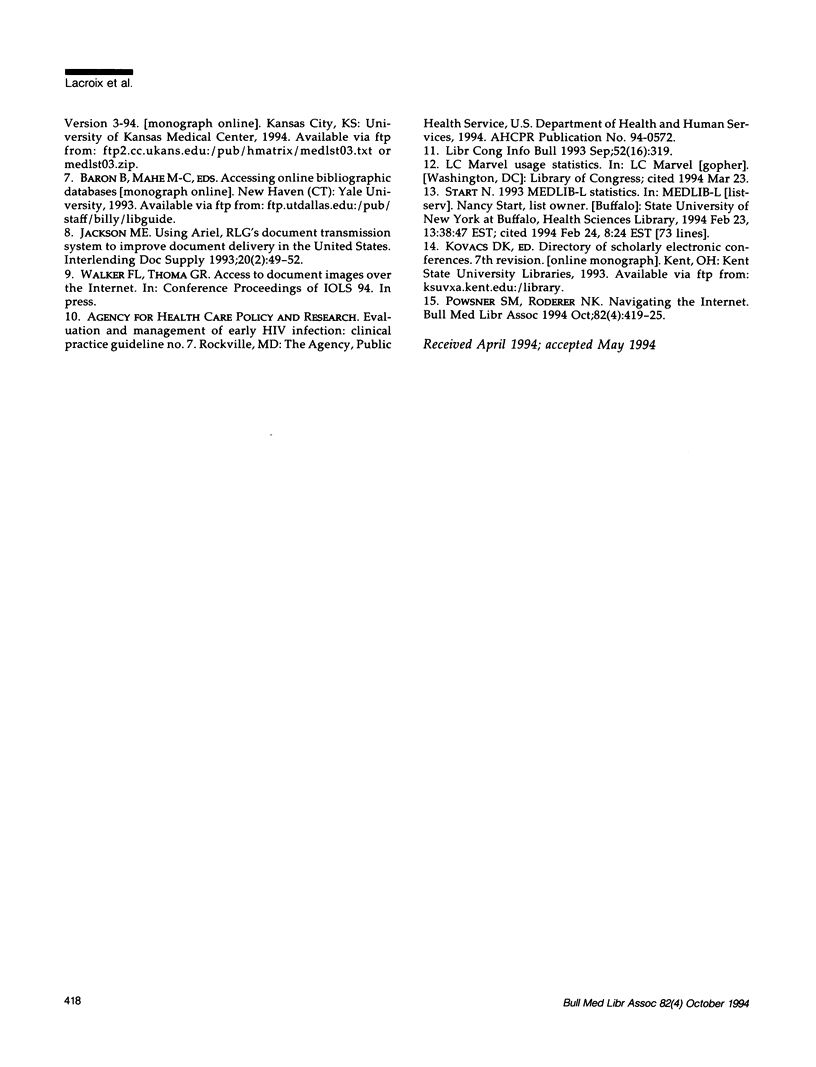
Selected References
These references are in PubMed. This may not be the complete list of references from this article.
- Powsner S. M., Roderer N. K. Navigating the Internet. Bull Med Libr Assoc. 1994 Oct;82(4):419–425. [PMC free article] [PubMed] [Google Scholar]


